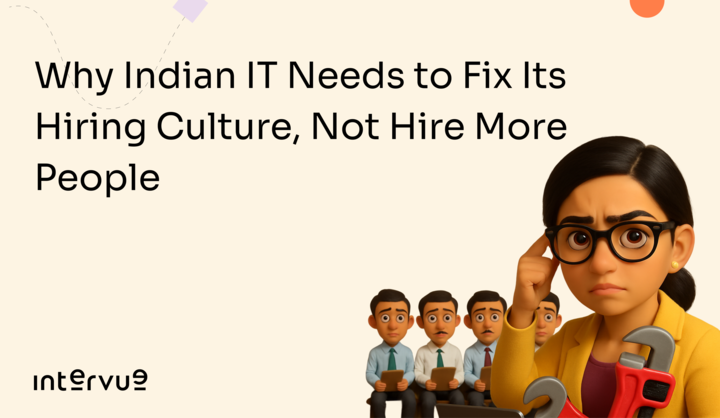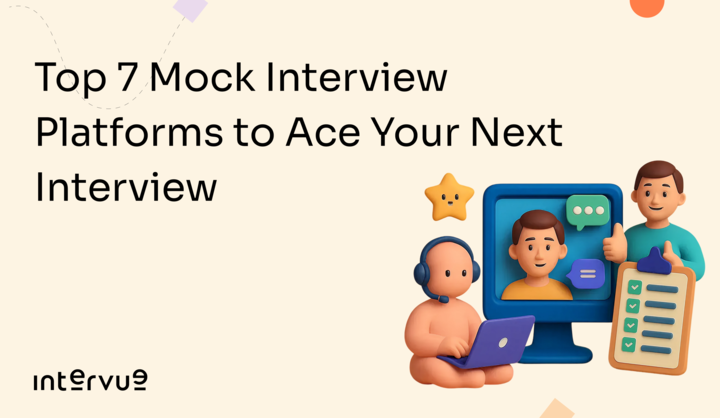Why Indian IT Needs to Fix Its Hiring Culture, Not Hire More People
In 2022, a TeamLease study found that over 60% of fresher hiring in Indian IT companies were still waiting for onboarding at the end of the year. Sixty percent. That’s not a delay. That’s a system-wide false promise.

It’s 2025, and the Indian IT industry is still stuck in the same hiring loop: hire big, onboard late, bench quietly. But the real cracks are deeper. From bloated offer pipelines to indefinite onboarding delays, the Indian IT bench culture has become a systematic flaw rather than a fallback strategy. As Indian IT hiring trends in 2025 continue to follow the “quantity over quality” approach, it’s clear that the tech hiring industry needs less hiring hype and more cultural overhaul.
Every year, like clockwork, I watch Indian IT giants roll out the same press releases. “We’re hiring 40,000 freshers!” they say. And sure enough, the media runs with it. Engineering students share it in WhatsApp groups, LinkedIn lights up with excitement. Everyone claps.
Except if you look closely, the applause feels hollow. And if you’ve ever been one of those 40,000, you already know why.
Those big numbers? They rarely translate into real work. Many freshers wait months, even a year, just to be onboarded. Some never are. The ones who do join? A lot of them spend their first months doing nothing. Literally nothing.
I’m not here to bash Indian IT. I’m here to say this as clearly as I can: the hiring culture is broken. And until it’s fixed, adding more names to an Excel sheet won't solve anything.
What I’ve Seen (And Why It Matters)
Let me take a moment to be honest. I’ve seen this happen to friends. To peers. To students with bright eyes and college loans who were thrilled to get placed in Wipro, TCS, or Infosys, only to wait endlessly for onboarding emails that never came.
I’ve spoken to people who sat on the bench for 8 months after joining. No mentor. No roadmap. Just logging into a system every day to say, “I’m available,” and then doing nothing.
If this sounds dramatic, I assure you—it’s not. It’s common.
The Old Model Isn’t Working Anymore
There was a time when this approach made sense. Back in the early 2000s, India’s IT industry was booming. Companies were scaling fast. Clients didn’t care much about niche skills. You could hire 10,000 freshers, train them on the job, and plug them into support or testing teams.
But today’s clients are different. They want specialists. Engineers who already know what they’re doing. They expect delivery from day one.
And here’s the uncomfortable truth: most freshers aren’t prepared for that. According to the National Employability Report, just 4.6% of engineering grads are employable for software jobs. That means more than 95% of those hired need serious upskilling before they can contribute.
But instead of hiring fewer, better-prepared candidates—or building real training programs, companies still cast a wide net, hoping a few will stick.
Spoiler: most don’t.
The Offer Letter Illusion
I wish more people talked about how damaging it is to give out offer letters without a plan to follow through.
In 2022, a TeamLease study found that over 60% of fresher hiring in Indian IT companies were still waiting for onboarding at the end of the year. Sixty percent. That’s not a delay. That’s a system-wide false promise.
For these students, especially from Tier 2 and Tier 3 colleges, that offer letter was the goal. They turned down other jobs for it. And when nothing came? They were stuck. No job. No income. No idea what to do next.
It's not just inefficient. It’s cruel.
How Onboarding Delays Are Damaging India’s Tech Talent Pipeline
Even if you do manage to get onboarded, there’s another black hole waiting: the Indian IT bench culture.
No tasks. No guidance. Just waiting. For months.
I’ve heard stories of new hires assigned to virtual training programs that feel like glorified YouTube playlists. No real feedback. No real progress.
This kind of limbo erodes confidence. It kills motivation. And it makes talented young people wonder if they ever belonged in tech at all.
When we talk about attrition, we rarely talk about how it starts here with disengagement at the very beginning.
Too Many Offers, Too Little Integrity in Hiring
If it’s broken, why do companies keep doing it?
Because it looks good.
Big hiring numbers make headlines. They impress shareholders. They keep campus placement cells happy. They help brands stay dominant in NIRF rankings and LinkedIn reach.
But make no mistake, this is hiring for optics, not operations.
When hiring is more about perception than preparation, we end up with thousands of resumes and very few real careers.
Real Hiring Reform Begins With Fixing the Culture First
Candidates aren’t stupid. They’ve learned to play the game.
Now, most freshers attend dozens of interviews, accept every offer they can, and wait to see who delivers. This leads to offer hoarding—a defensive strategy.
Companies then complain about “dropout rates” of 30%. And what do they do in response? You guessed it, hire even more.
It’s an endless loop. One was built on fear and broken promises.
How Do We Fix It?
If you’re still with me, thank you. And if you’re a recruiter, manager, or someone in HR at an IT company, here’s what I wish someone had told you five years ago:
1. Match offers with real demand.
If you don’t have 40,000 project openings, don’t make 40,000 offers. It’s that simple.
2. Make onboarding sacred.
Set a date. Stick to it. Communicate like a professional. Ghosting your own hires should never be normalized.
3. Train like you mean it.
Don’t hand out generic certifications. Give freshers real-world projects. Pair them with mentors. Create learning journeys, not tick-box videos.
4. Sync HR and delivery.
Right now, hiring teams and project teams feel like they’re in different companies. Fix the bridge between them. You’ll save time, money, and morale. Tools like Intervue help companies run structured, skill-based interviews at scale, ensuring consistency, better candidate experience, and fewer hiring regrets.
Fix the Pipeline, Respect the People: A Hiring Reset Plan
Behind every “fresher” is a person.
Someone who studied hard. Who made their parents proud. Who thought this offer letter was a turning point in their life?
Treat them accordingly.
Not as resources. Not as backup options. But as future teammates, leaders, and CTOs.
If their first job experience is silence, neglect, or betrayal, they won’t forget it. And they won’t stick around.
Final Thought
Indian IT recruitment doesn’t need another wave of freshers. It needs a reset. The good news? That reset is entirely possible.
It starts by putting people, not just numbers, at the center of hiring. Behind every offer letter is someone who’s worked hard, taken a chance, and trusted the system. We owe them more than just “We’ll let you know.” We owe them a plan, a path, and a purpose.
It’s not about hiring more. It’s about hiring better. And that starts with the way we interview. That’s where Intervue comes in. By helping teams run structured, skill-based interviews at scale, Intervue ensures that every candidate gets a fair shot—and every hire is aligned with real project needs, not just PR goals.



